Many different spiders are found in Tennessee. There are likely over 40 species, and some scientists suggest that we have yet to identify them all. While most of these spiders are harmless, Tennessee is home to quite a few venomous spiders, five species in all.
Identifying spiders correctly is vital to prevent potentially dangerous bites. Most spiders will do just fine with being moved outdoors via your bare hands. Others might send you to the emergency room.
Keep reading for information on the most common spiders found in Tennessee.
The 17 Spiders Found in Tennessee
1. Southern Black Widow

| Species: | Latrodectus mactans |
| Longevity: | 3–4 years (females) |
| Good to own as a pet?: | No |
| Legal to own?: | No |
| Adult size: | 3–12 mm |
| Diet: | Woodlice, mice, millipedes, and centipedes |
Most people know about the black widow spider. While there are technically several species, the Southern Black Widow is the most well-known one. Females have the familiar red hourglass on their backs. Males are either purple or greyish black. They tend to become more purple as they get older.
These spiders are highly venomous. A few hundred bites are recorded each year, but there are usually no adult fatalities. Females are more venomous because they are larger and have sharper mouthparts.
2. Northern Black Widow
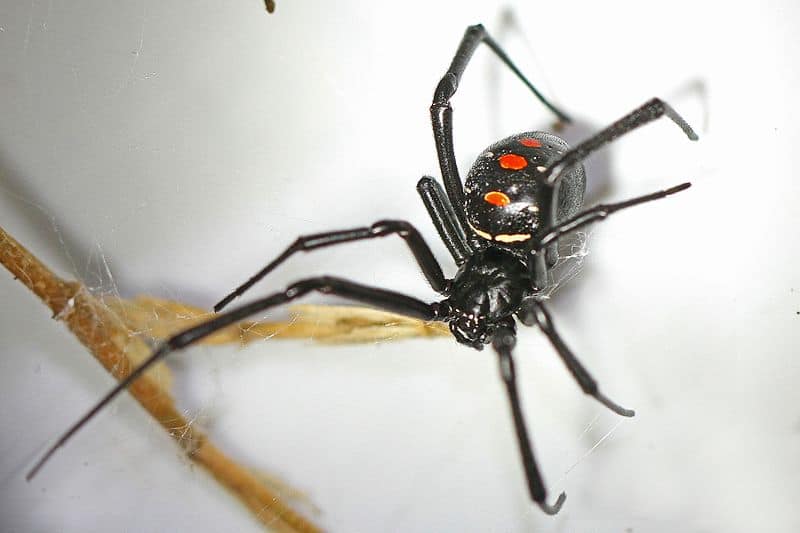
| Species: | Latrodectus variolus |
| Longevity: | 1–3 years (females) |
| Good to own as a pet?: | No |
| Legal to own?: | No |
| Adult size: | 4–11 mm |
| Diet: | Insects |
The Northern Black Widow is slightly different from their southern cousin. Their hourglass mark is a bit broken and doesn’t look quite as clear as the southern black widow’s. However, the red markings are still quite noticeable.
These spiders are shy, so bites are not expected. Usually, they flee instead of bite. While their venom is toxic, it is released in small amounts. There are few fatalities, with most of them being children.
3. False Black Widow
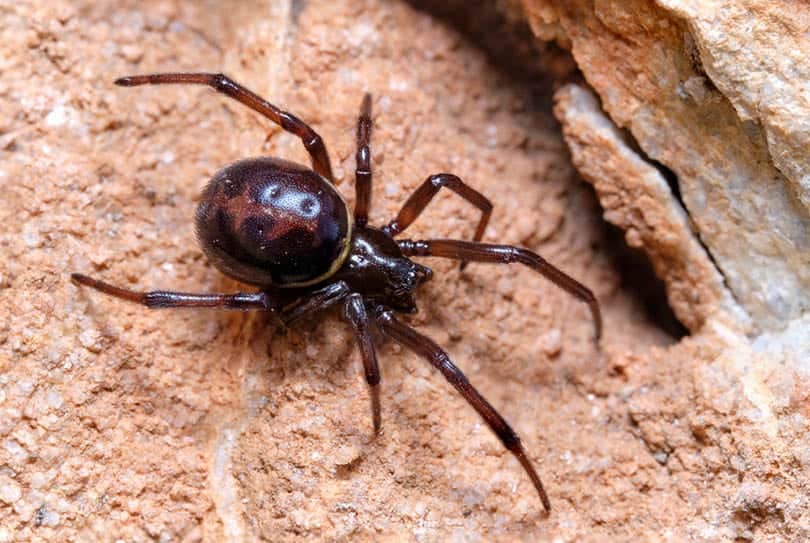
| Species: | Steatoda grossa |
| Longevity: | 1–3 years |
| Good to own as a pet?: | No |
| Legal to own?: | Yes |
| Adult size: | 10–15 mm |
| Diet: | Insects–mostly flying varieties |
While these spiders look like black widows, their bite is harmless. These spiders have white, beige, or orange markings on their abdomens instead of the red markings commonly associated with black widows.
They do look similar to a regular black widow, which is why they often get mistaken as such. These spiders do have venom, but it is not particularly troublesome for people. Mild pain is usually the only symptom.
Relaetd Read: 10 Spiders Found in Arizona
4. Brown Recluse

| Species: | Loxosceles reclusa |
| Longevity: | 1–2 years |
| Good to own as a pet?: | No |
| Legal to own?: | No |
| Adult size: | 6–20 mm |
| Diet: | Soft-bodied insects |
These spiders are primarily brown. They have a lighter brown, violin-shaped marking on their back, which is the primary way that they are identified.
The Brown Recluse is quite venomous. They have a hemotoxic venom that requires medical attention. Symptoms range from mild to severe–with most not being much more severe than a bee sting. This species is not aggressive, though. They usually only bite after being disturbed or threatened.
5. Northern Yellow Sac Spider
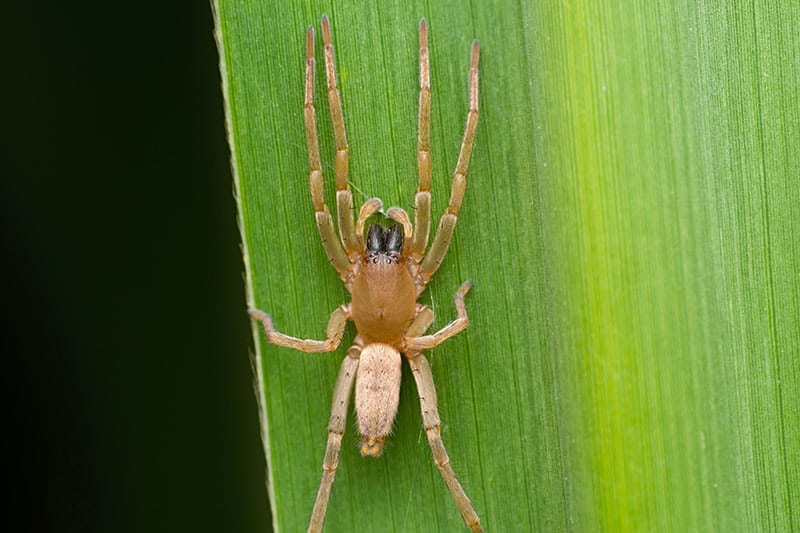
| Species: | Cheiracanthium mildei |
| Longevity: | 1–2 years |
| Good to own as a pet?: | No |
| Legal to own?: | No |
| Adult size: | 5–99 mm |
| Diet: | Insects and other spiders |
Technically, the Northern Yellow Sac Spider is venomous. However, the severity of their venom appears to be relatively low. They don’t cause intense reactions in most cases.
Their ashen body and yellow-beige abdomen characterize these spiders. Usually, they have patches of green as well. They are less common than other variants and are usually not listed on venomous spider lists.
Related Read: 18 Spiders Found in Alabama
6. Giant Lichen Orb Weaver
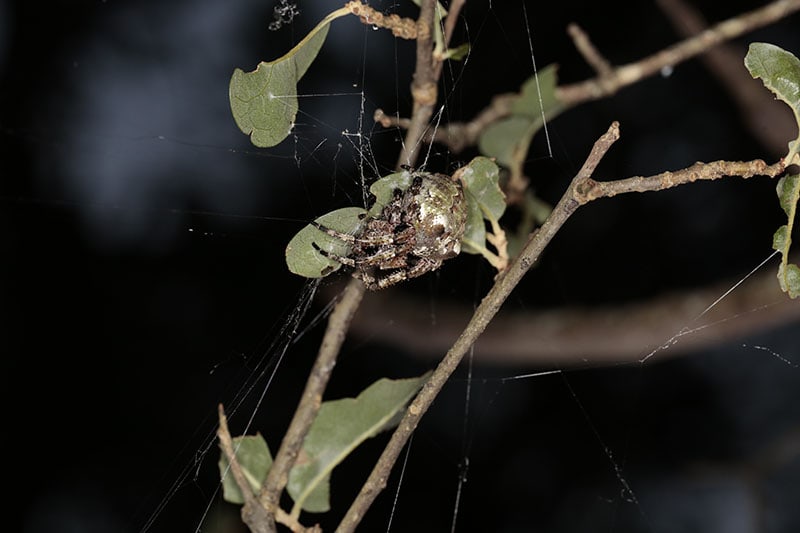
| Species: | Araneus bicentenarius |
| Longevity: | 1–2 years |
| Good to own as a pet?: | Yes |
| Legal to own?: | Yes |
| Adult size: | 10–30 mm |
| Diet: | Insects and wasps |
These spiders are enormous. Their large size is why they got their name. They make orb-shaped spiral webs up to 8 feet in diameter. These spiders sit on the edge of their web and wait for their prey, unlike other spiders.
They do hunt with venom, but it is not dangerous to humans. They are relatively docile and bite infrequently.
7. Spiny-Backed Orb Weaver
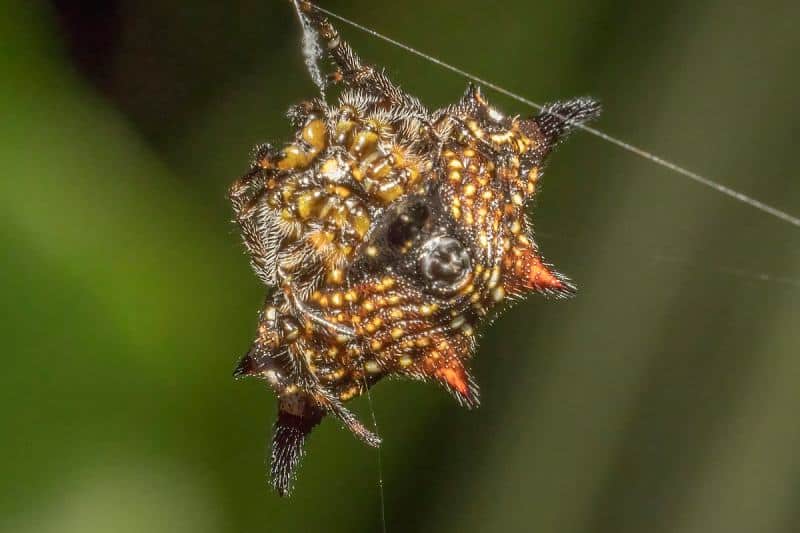
| Species: | Gasteracantha cancriformis |
| Longevity: | 1 year (max) |
| Good to own as a pet?: | Yes |
| Legal to own?: | Yes |
| Adult size: | 99–120 mm |
| Diet: | Winged insects |
This spider looks quite odd. The females have six abdominal projections, though the males only have four or five.
Many people mistake them as harmful due to their “spiky” appearance. However, they are entirely harmless. They rarely bite and aren’t venomous. Like many spiders, they use venom to kill their prey, but this venom is not harmful to people.
8. Bold Jumping Spider

| Species: | Phidippus audax |
| Longevity: | 1–2 years |
| Good to own as a pet?: | Yes |
| Legal to own?: | Yes |
| Adult size: | 23–140 mm |
| Diet: | Insects |
Jumping spiders are among the most common species in Tennessee. The Bold Jumping Spider has an exquisite coloration, which also makes them among the more beautiful species out there. They hunt by pouncing on their prey and may do this when frightened as well. They don’t make webs for prey purposes.
They don’t like people and are not venomous in the least. Their bite may be a bit painful and swollen, though.
9. Canopy Jumping Spider
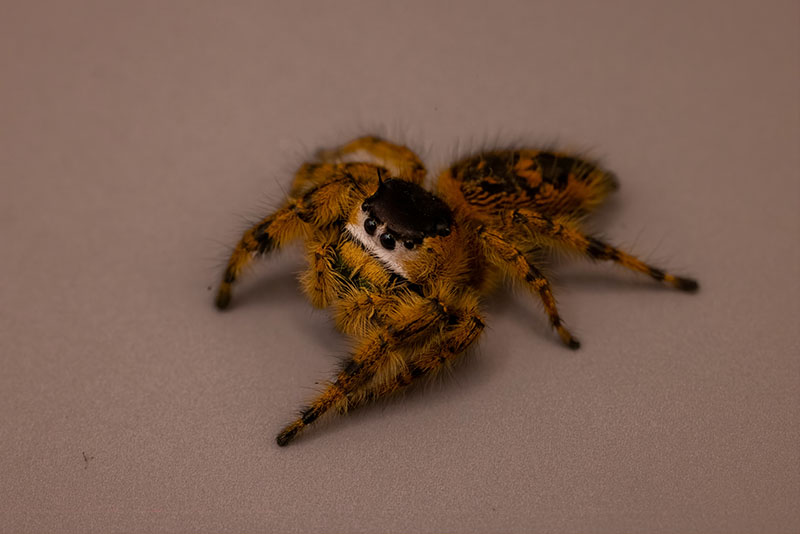
| Species: | Phidippus otiosus |
| Longevity: | 10–12 months |
| Good to own as a pet?: | Yes |
| Legal to own?: | Yes |
| Adult size: | 16 mm |
| Diet: | Insects |
As their name suggests, the Canopy Jumping Spider spends most of their life in trees. They range in color from brown to orange to grey. They are known for their scary-looking purple-green fangs, though their bite is quite harmless.
This species does not make a web for prey. Instead, they are hunting spiders. However, they may make webs while resting.
Relaetd Read: 15 Spiders Found in Minnesota
10. Magnolia Green Jumper
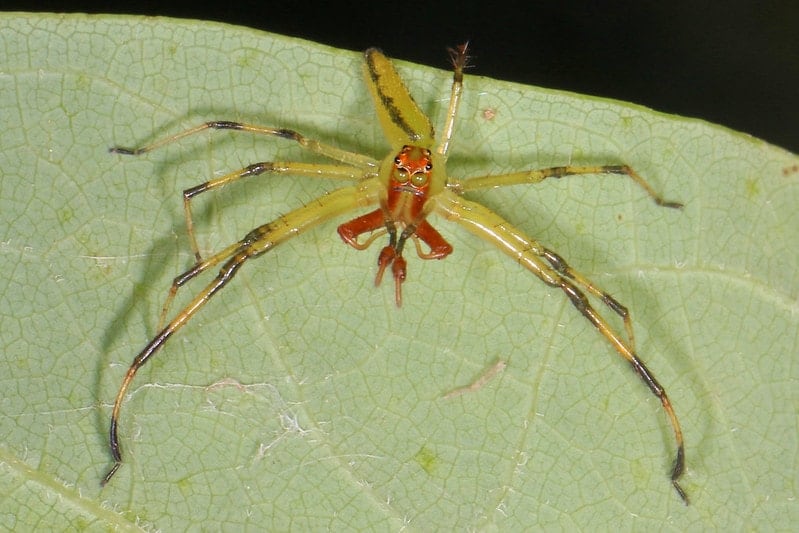
| Species: | Phidippus otiosus |
| Longevity: | 10–12 months |
| Good to own as a pet?: | Yes |
| Legal to own?: | Yes |
| Adult size: | 5–8 mm |
| Diet: | Aphids, mites, ants |
The Magnolia Green Jumper is green, as their name says. They have black spots across their abdomen and a patch of pale scales on their head. They have relatively large legs in comparison to other jumping spiders. Their vision is also better than most other spiders.
They live most of their life on magnolia trees, which their translucent green body helps them blend into.
11. Dock Spider
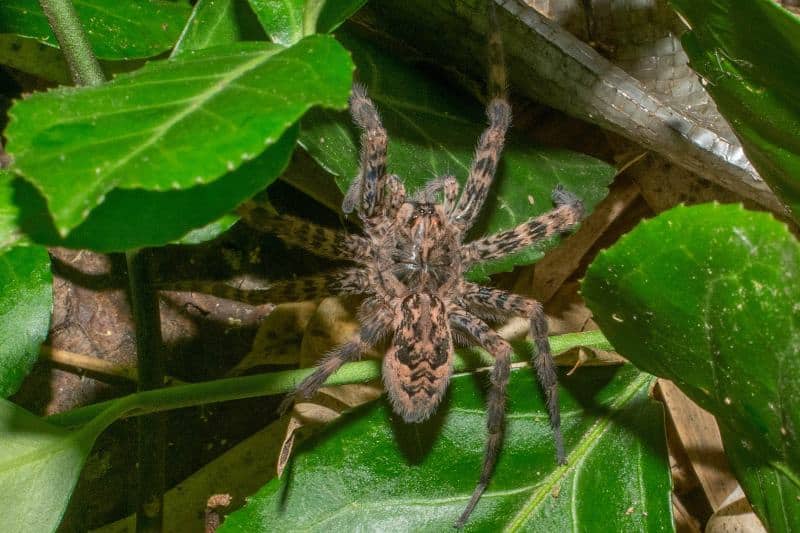
| Species: | Dolomedes tenebrosus |
| Longevity: | 10–12 months |
| Good to own as a pet?: | No (semi-aquatic nature makes care difficult) |
| Legal to own?: | Yes |
| Adult size: | 15–20 mm |
| Diet: | Aquatic insects and small fish |
The Dock Spider is one of the few aquatic spider species native to Tennessee. They are found throughout much of the USA, southern Canada, and Mexico.
This species can stay underwater for several minutes, grabbing onto a plant to keep themselves under. They mostly do this when threatened.
12. Triangulate Cobweb Spider
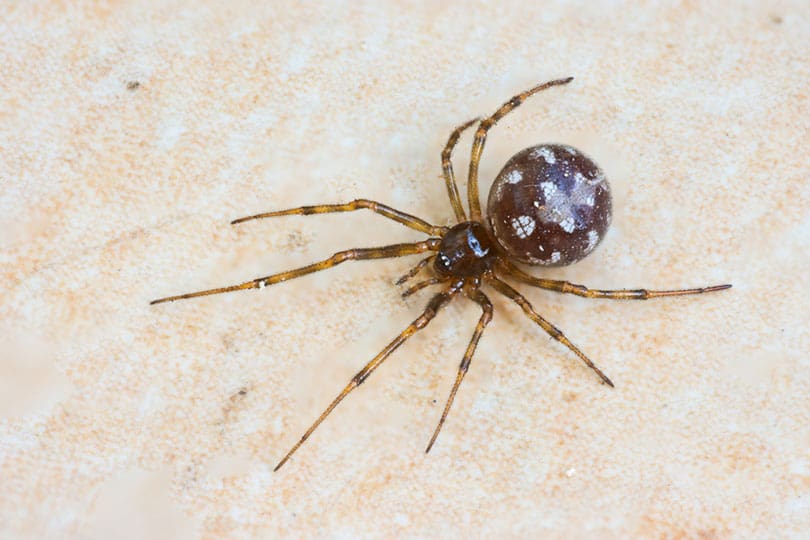
| Species: | Steatoda triangulosa |
| Longevity: | 10–12 months |
| Good to own as a pet?: | Yes |
| Legal to own?: | Yes |
| Adult size: | 3–6 mm |
| Diet: | Ticks, arthropods, and other spiders |
This species has a brown or black body with yellow-tan legs. Purple zigzag lines down their abdomen make them relatively easy to identify. They also have triangular yellow spots on their abdomen. Their abdomen is also strangely round-shaped. The males tend to be more slender than the females.
This species is not known for being aggressive. They may bite if provoked. However, their venom is not toxic to people and does not require medical intervention.
13. American House Spider
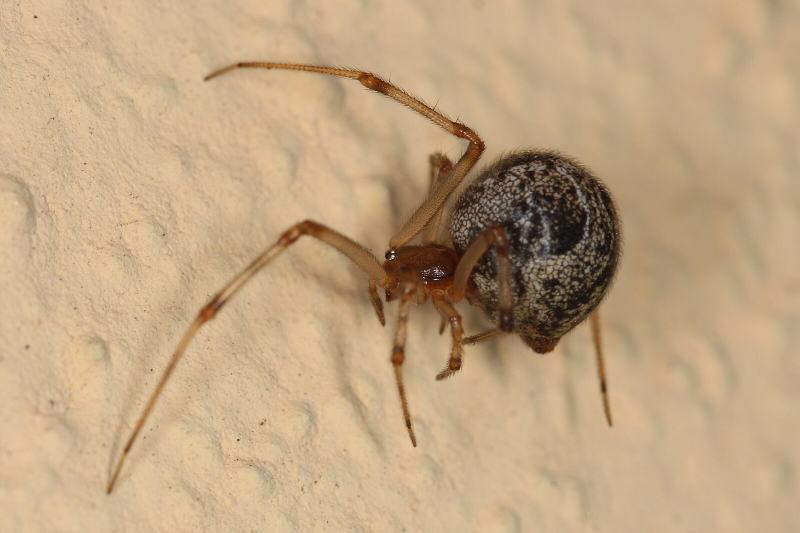
| Species: | Parasteatoda tepidariorum |
| Longevity: | 10–12 months |
| Good to own as a pet?: | Yes |
| Legal to own?: | Yes |
| Adult size: | 3–8 mm |
| Diet: | Mosquitoes, flies, wasps, ants, etc. |
Also known as the common house spider, this species is well-known throughout much of the United States. They are a dull brown with either yellow or orange legs, which are rather long and skinny.
These spiders are known for biting, though they aren’t necessarily aggressive. They are not venomous to people, though they are closely related to the black widow. Usually, they only bite when provoked. Symptoms of bites include swelling, itching, and redness. Bites usually look like your typical bug bite, so it can be hard to tell the difference.
Related Read: 10 Spiders Found in Michigan
14. Southeastern Wandering Spider
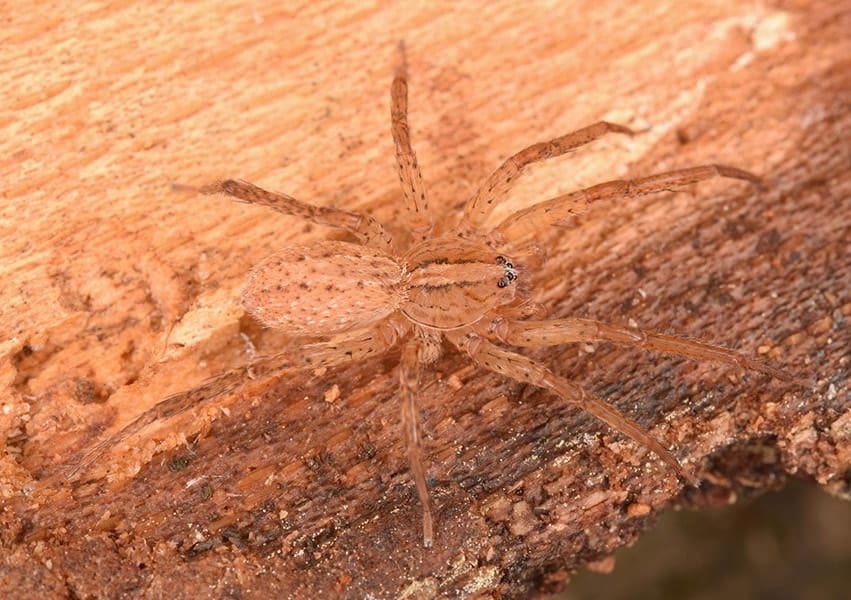
| Species: | Anahita punctulata |
| Longevity: | 10–12 months |
| Good to own as a pet?: | Yes |
| Legal to own?: | Yes |
| Adult size: | 5–40 mm |
| Diet: | Small insects |
The Southeastern Wandering Spider is a dull brown or tan. They have decently long legs, especially compared to other wandering spiders.
These spiders do not spin webs to catch their prey. Instead, they stay hidden inside a “den” and attack when something gets close enough. While these dens are usually in the ground, they can also be in plants and fruits, like bananas.
They will get defensive if provoked. However, their bite doesn’t cause anything worse than localized pain and swelling. It will look similar to other bug bites.
Their venom is simply not strong enough to harm people.
15. Ravine Trapdoor Spider
| Species: | Cyclocosmia truncata |
| Longevity: | 5–12 years |
| Good to own as a pet?: | Yes |
| Legal to own?: | Yes |
| Adult size: | 19–30 mm |
| Diet: | Beetles, grasshoppers, moths, and crickets |
This interesting-looking spider has a rather plump body and thick legs. They have a disc-like abdomen that helps them clog their burrow’s entrance when necessary.
They rarely bite people and don’t have enough venom to cause medical problems. Their bites will resemble the bites of other moderately venomous bugs. Localized swelling and redness may occur. Usually, these spiders hide or cover up their burrow when threatened, reducing the odds of actually biting a person. They aren’t known for traveling into human dwellings either.
- Read also: 12 Spiders Found in Kentucky
16. Wolf Spider

| Species: | Tigrosa georgicola |
| Longevity: | 1–7 years |
| Good to own as a pet?: | Yes |
| Legal to own?: | Yes |
| Adult size: | 10–22 mm |
| Diet: | Small insects |
There are several types of wolf spiders. One of the most common is the Tigrosa georgicola, which is endemic to the southeastern US.
These spiders are primarily dark brown, though they have a lighter brown stripe that runs down their carapace. They are commonly mistaken for Brown Recluses due to this marking. However, their light stripe is more obviously a stripe. The Brown Recluse’s marking gets thicker around their head, making it look more like a violin.
All wolf spiders will chase and pounce on their prey, just like a real wolf does. They do not build webs for hunting purposes.
17. White Banded Crab Spider
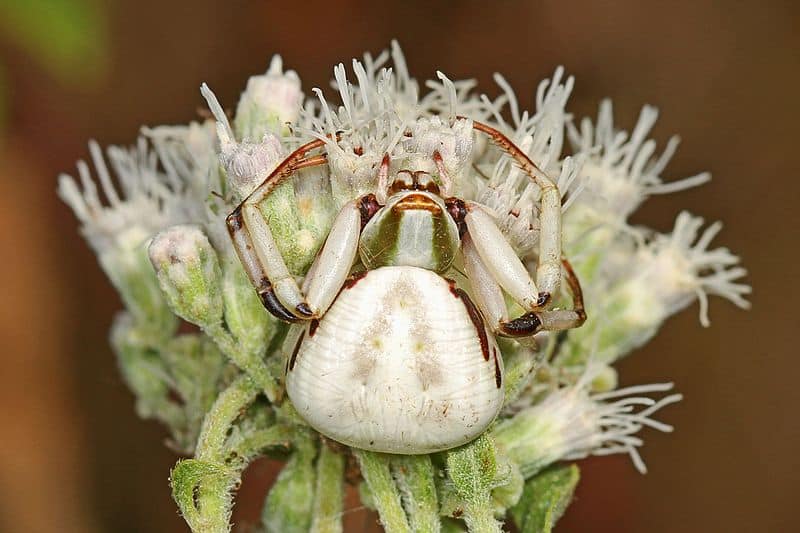
| Species: | Misumenoides formosipes |
| Longevity: | 10-12 months |
| Good to own as a pet?: | Yes |
| Legal to own?: | Yes |
| Adult size: | 2.5-11.3 mm |
| Diet: | Mites, butterflies, and honeybees |
The White Banded Crab Spider has a body shape that resembles real crabs, hence the name. They vary a bit in coloring depending on their sex.
Females range from tan to white to yellow, while males are shiny red or green. Their markings can vary widely as well. Some females have red markings, while others don’t. Most males have darker legs, but even this can vary.
They do technically have venom, but it is only strong enough to harm prey animals smaller than the spider. It is entirely harmless to people because the spider is unable to inject it into human skin. Their mouthparts aren’t large enough.
- You may also want to read: 12 Spiders Found in New York

Last Thoughts
There are tons of different spiders in Tennessee. Correct identification can be significant because many of these species have potentially harmful venom. For the most part, though, Tennessee spiders are quite harmless. If you come across a spider in the woods, it probably isn’t venomous.
Even the venomous spiders in Tennessee aren’t extremely harmful — most of their bites are minor and require no medical attention. These spiders simply don’t make enough venom for most healthy adults to be threatened. That said, spider bites are most harmful to children (due to their smaller size), seniors, and those with compromised immune systems.
Next on your reading list: 9 Lizard Species Found in Tennessee (With Pictures)
Featured Image Credit: Nick626, Shutterstock
